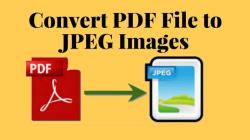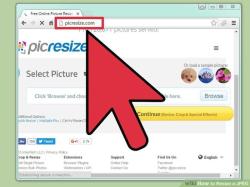How do you change a picture to a JPEG file?
Converting a picture to a JPEG (Joint Photographic Experts Group) file format is a straightforward process, and you can do it using various software or online tools. Here's a step-by-step guide on how to change a picture to a JPEG file:
Using Windows Built-in Tools:If you're using a Windows computer, you can use the built-in Paint application to convert a picture to a JPEG file. Here's how:
Open the Image: Right-click the image file you want to convert to JPEG and choose "Open with" > "Paint." This will open the image in the Paint application.
Save as JPEG: In the Paint application, click on the "File" menu in the top-left corner.
Select "Save As": Choose "Save as" or "Save as picture" (the exact wording may vary depending on your version of Paint).
Choose JPEG: In the "Save as type" dropdown menu, select "JPEG" or "JPEG Image" as the file format.
Specify File Name and Location: Choose where you want to save the file and enter a name for the JPEG file.
Adjust Options (if needed): Some versions of Paint allow you to adjust the quality of the JPEG image. You can use the "Save as JPEG options" to make quality adjustments. Higher quality results in a larger file size, while lower quality reduces the file size.
Save: Click the "Save" button to convert and save the picture as a JPEG file.
Using Online Converters:You can also convert a picture to a JPEG file using online converter websites. Here's how:
Open a web browser and go to an online image converter website. Some popular options include Convertio, Online-Convert, and AnyConv.
Upload the Picture: On the online converter website, look for an "Upload" or "Choose File" button and select the picture you want to convert to JPEG.
Select Output Format: Choose "JPEG" as the output format. You may see options like "JPEG," "JPG," "JPE," or "JFIF."
Adjust Quality (if needed): Some online converters allow you to adjust the quality or compression settings. You can typically leave this at the default setting if you're unsure.
Convert: Click the "Convert" or "Start" button to initiate the conversion process.
Download JPEG: After the conversion is complete, the website will provide a download link for the JPEG file. Click the link to save the converted image to your computer.
These steps should help you change a picture to a JPEG file using either built-in Windows tools or online converter websites. Keep in mind that JPEG is a lossy compression format, so some image quality may be lost during the conversion, particularly if you use high compression settings. Adjust the quality settings as needed based on your preferences and requirements.
Converting an Image to a JPEG File: Step-by-Step Process
Converting an image to a JPEG file is a straightforward process that can be accomplished using various methods. Here's a step-by-step guide using image editing software:
Step 1: Open the Image File
Launch your preferred image editing software, such as Adobe Photoshop, GIMP, or Paint. Open the image file you want to convert to JPEG format.
Step 2: Access Save Options
Navigate to the "File" menu and select the "Save As" or "Export" option. This will open a dialog box for saving the image file.
Step 3: Choose JPEG Format
Locate the "File Format" or "Save As Type" option within the dialog box. Click on the drop-down menu and select "JPEG" from the list of available file formats.
Step 4: Adjust Quality Settings (Optional)
Some image editing software may offer quality settings for JPEG compression. These settings allow you to balance file size and image quality. Higher quality settings will result in larger file sizes but better image quality, while lower quality settings will produce smaller file sizes with some loss of detail. Adjust the quality settings as desired.
Step 5: Save the Converted Image
Click the "Save" or "Export" button to save the image file in JPEG format. The converted JPEG file will be stored in the specified location.
Changing Image Formats to JPEG for Compatibility
The JPEG format is widely supported by various applications and devices, making it a versatile choice for image storage and sharing. Converting image formats to JPEG offers several advantages:
Widespread Compatibility: JPEG is compatible with most image viewers, web browsers, and other applications, ensuring that your images can be viewed and shared across different platforms.
Small File Size: JPEG's efficient compression algorithm significantly reduces file size without significantly compromising image quality. This makes JPEG ideal for sharing images online or via email.
Suitable for Photographs: JPEG is well-suited for storing and sharing digital photographs due to its ability to handle complex color variations and maintain acceptable image quality.
File Conversion: Transforming Pictures into JPEG Files
Converting pictures into JPEG files is a common practice for various purposes:
Reducing File Size: Converting to JPEG can significantly reduce file size, making it easier to share images online or via email.
Maintaining Image Quality: JPEG's compression algorithm strikes a balance between file size and image quality, making it suitable for most digital images.
Compatibility with Applications: JPEG's widespread compatibility ensures that your images can be opened and viewed across different devices and software programs.



